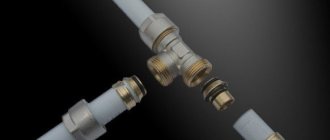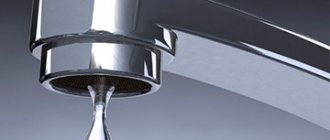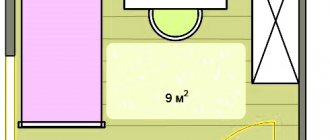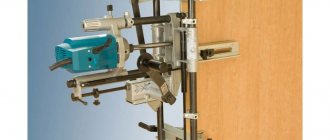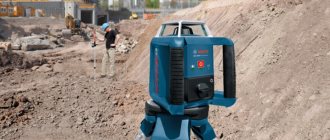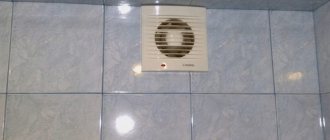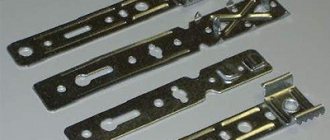Welding metals and materials is not limited to the arc welding method alone. Today there are a large number of types and methods of welding and it is possible to select the appropriate joining method for almost any application.
Russian industrial standards classify welding methods according to three criteria: technical, physical and technological. Physical determines the form and type of energy used to connect materials. Classes are determined by the form of energy, and types of welding are determined by GOST by the type of energy. According to this division, there are three large classes:
- thermal - using melting materials using thermal energy,
- thermomechanical – using thermal energy and pressure,
- mechanical - using mechanical energy to connect parts.
Each includes a large number of different welding types suitable for different application conditions.
The classification of welding types refers to technological specific features of a particular method, for example, the characteristics of the welding current, the type of electrode and other parameters. Technologically, welding is distinguished using filler wire, metal or non-consumable electrode, alternating or direct current, etc.
Technical characteristics determine the work scheme, the degree of automation or mechanization and the continuity of the process, as well as methods of protecting the weld pool. For example, according to such characteristics, welding is submerged or in a gas environment, manual, semi-automatic and automatic, continuous or spot and others.
Victor-Sudzuk › Blog › Welding, Switching to semi-automatic.
Perhaps this entry will be useful to those who are faced with the choice of which semi-automatic machine for MIG welding to buy. I
welded with an ASEA -200 machine for MMA (electric arc) welding for 2 years, welded a suspension for a car with it twice and it’s time to switch to a semi-automatic machine. The reasons are as follows in the disadvantages of arc welding that I had to face in the process:
1) Unstable seam quality.
During the electrode welding process, the metal rod of the electrode melts, melting the metal and its coating burns, releasing shielding gas. Accordingly, the quality of the weld is directly affected by the quality of the electrode (the skill of the welder, first of all, but we won’t talk about that), the composition of the metal of the rod and the composition of its coating, as well as its condition, cracks, porosity, etc. as well as dampness, so it is customary to dry the electrodes before use. Moreover, the condition of the coating on one electrode may not be stable along the entire length of the electrode, in some places it is better, in others it is worse, in the end all this will affect the quality of the seam, in some places it will lie flat, melting the metal well, in others it is worse. which will be noticeable in the seam under the slag,
2) not all electrodes are equally useful
, when you buy two identical packs of electrodes, you buy two different packs, released on different days. they will differ in composition and quality, some will cook better, some will cook worse. refers primarily to the electrode shell
3) for a long time
, electrode welding begins by drying them at 200 degrees for 15-30 minutes
4) uncomfortable
, during the welding process the electrode burns out and becomes shorter, i.e. Having started working with a 30 cm electrode, you stop working with a cinder 3-5 cm long, while you must maintain the same position of the electrode relative to the workpiece and guide it in this way, performing the necessary manipulations.
5)dirty workplace
, after welding with an electrode, the seam is covered with slag - the burnt shell of the electrode, cleaning the seam from slag, throw it on the floor, and if you weld a lot, then a fair amount of slag accumulates, 6) a
dirty workpiece
during the welding process, part of the metal splashes and sticks to the workpiece, for experienced ones a little less, for beginners a little more, but they all have drops, and if you need to make a lot of seams on a small surface, a lot of these drops form.
6) harmful
, the smoke released during combustion of the electrode shell is harmful
7) takes a lot of time
preparation of electrodes, installation of the electrode in the holder, welding, removal of slag.
This is just what I immediately remembered. Semi-automatic (SA) has its disadvantages. The main thing is the higher cost of welding; if for electric arc welding you need a machine, electricity and electrodes, then for PA you need a machine, wire. gas, reducer, anti-carbon spray, consumables for the nozzle, gas cylinder, and a cart to carry it all. Naturally, the device itself is more expensive. Also, the cost of the seam is higher; instead of an electrode, you need more expensive gas wire and trips to refill the cylinder. But in other respects, the advantages over MMA welding are obvious.
After making a decision to purchase a PA, the biggest difficulty arises, choosing which one to get...PAs appeared a long time ago and many budget options have already appeared. main: Riland Aurora Kedr Resanta Svarog
Ryland, Aurora and cedar are the same thing, in stores they will tell you that Aurora and cedar, depending on what you ask about, these are Russian developments assembled in China, in fact these are all Chinese developments of the Ryland company, rebranded for sale in Russia, amateurs trees and yellow color take CEDAR, lovers of blue and something cosmic in the name Aurora.
in the search for a good PA, the most useless exercise is to ask the seller’s opinion... so I asked like-minded friends: putok recommended Resanta Saipa 220, showed the seams, liked it, takezo recommended Riland 175 GD showed the seams, also liked it
The main differences are that Resanta is cheaper, it does not have synergetics (built-in welding programs, when you select the desired current power, the program adjusts the rest for you during the welding process for the best weld) at a higher power price. Ryland is inferior in power. Ryland has the ability to TIG weld aluminum, more for show, that it is from the TV series in the phone, but the quality leaves much to be desired. I’ve come across good reviews about Resanta before, but I didn’t find it on sale at the right time, and it’s also not clear what’s going on with the service centers, so I chose the KEDR 175GD, also known as Ryland. he's an Aurora.
Spark PowerARC 230
The review of inverter-type semi-automatic welding machines is supplemented by a popular model from the Spark brand, namely PowerARC 230. This semi-automatic machine copes well with welding in a shielding gas environment and with welding without gas using flux-cored wire. The device operates with small voltage drops and produces up to 230 Amperes. For welding, you can use wire with a diameter of up to 1 mm.
Is it easier to cook with a semiautomatic device or an electrode?
13 July 2022, Mon
Semi-automatic welding and manual electric arc welding have a number of differences. It cannot be said that one of them is better or worse. It all depends on the type of work for which the unit is selected, the requirements for the quality of the weld and the amount of load that will be placed on the unit. Which type of welding is simpler - semi-automatic, using welding wire in a protective gas atmosphere or manual arc, using electrodes?
In order not to make a mistake in choosing the required unit and welding mode, you need to have an understanding of the operation of the equipment. How it is carried out and what are the advantages of each device. All this and much more can be found out from the description of the units or by consulting with managers on the SvarMax website.
Differences between manual and semi-automatic welding
Manual and argon arc welding is carried out with consumable piece and non-consumable tungsten rods. Metal is melted by a welding electric arc. During this process, the molten metal of the workpiece being welded is mixed with the metal of the working electrodes. In this welding mode, the weldability index and the chemical components of the weld determine its quality, strength and accuracy. Also take into account:
- thickness, type of electrode used;
- chemical composition of the electrode coating;
- thickness and type of metal being welded;
- length of the weld seam.
The quality of welding in manual arc mode also depends on such parameters as: current density and strength, and the length of the welding arc. Welding in this mode can be top and bottom.
Semi-automatic welding differs from manual welding in that the consumable material in it is not an electrode, but a welding consumable or flux-cored wire. It is supplied automatically at the time of welding. When using welding wire, welding is carried out in a protective gas atmosphere, and when using flux-cored wire, gas is not needed.
Which is better?
The efficiency and speed of semi-automatic welding is much higher, and it can be used to weld not only thick parts, but also thin-sheet iron. During operation, there is no need to take a break to change the used electrode.
Each type of welding has its own advantages and disadvantages. And it’s impossible to say which one is better.
Equipment for manual welding is easy to use and maintain, and you can work with it in different positions; welding is carried out in the most inaccessible places, connecting a wide variety of metals.
Semi-automatic welding is used for body repairs. It can cook products that are already corroded. The work process is not expensive. Also, when working, you can use copper wire. The protective gas used during operation protects the seams and makes them stronger and neater.
Electric arc manual welding is used for connecting reinforcement, parts, during the construction of metal meshes and bases (frames), and installation of reinforced concrete structures. Semi-automatic is used when working with non-ferrous metals, for joining pipes, stainless steel, in the aviation industry, and in the automotive industry.
Which manufacturer should you prefer?
To decide which company to choose a semi-automatic welding machine, you need to understand that there are conditionally two price segments and quality types on the market - China and Europe.
Naturally, prices for devices made in China will be lower, but you can also find good options in this market.
For example, the products of the Svarog plant go through a complete factory production and quality control cycle and have an excellent quality-to-price ratio.
In the mid-price category, the Czech manufacturer Kuhtreiber should be noted. The quality of this company is no worse than German, but the price is an order of magnitude lower.
It would be better to choose a premium semi-automatic welding machine from German manufacturers. A good premium company is EWM.
Without exaggeration, it can be called the flagship of all welding equipment manufacturers in the world.
If the price of the issue does not play a big role, it is better to purchase semi-automatic welding machines of the transformer or inverter type.
Most often, inverter devices have a simplified configuration method, which is suitable for inexperienced welders, and an in-depth one for professionals.
Car body welding
Today we will talk about how and what is the best way to weld the body of our car.
If you, as a true car enthusiast, do not want to trust the repair of your “iron horse” to the wrong hands, especially some minor work, and also want to save a lot, then this article is for you.
Recently, interest in bodywork has been growing. Moreover, many are interested in welding a car body . Someone wants to weld the necessary part or patch, someone wants to pull out a dent, someone wants to correct traces of corrosion. All this can be done with your own hands in the garage. You just need to arm yourself with the necessary tools, study the nuances of the work ahead and practice a little.
ELAND MIG-130
The rating of semi-automatic welding machines will be incomplete if we do not add an ultra-budget model for those who are on a budget. ELAND MIG-130 is a standard budget Chinese semi-automatic, of which you can find plenty in any specialized store. However, this model is quite reliable and gets the job done.
The device requires 220V for power supply, so it is not suitable for welding in low voltage conditions. According to the manufacturer, the maximum current is 130 Amperes, which seems to be true. You can cook for no longer than 5 minutes without a break. The device weighs a little less than 20 kg, so be prepared for that. Overall, the ELAND MIG-130 is a good option for the price. It does not have any special characteristics, but it works stably and is inexpensive. What else does a beginner or summer resident need?
Feedback from a welder:
I spent a long time choosing among different welding machines. In the end I bought this one. It was necessary to digest the arches of the car. I read in reviews that the metal spatters a lot when welding, but everything was fine for me. I think it depends on the quality of the wire and the correct settings of the device. Cook stainless steel without any questions at all. For the money, this is a decent option for the home and small jobs.
How to weld with cored wire
Semi-automatic welding allows for faster welding due to the continuous supply of wire, which serves as filler metal. Thus, it is possible to deposit large volumes on worn surfaces or create long seams on metal structures without the distraction of changing the electrode. The quality of the seam is much better than when working with coated consumables. But the semi-automatic device has one drawback - in addition to the device, it is also necessary to deliver a gas cylinder weighing 83 kg to the workplace. This makes the task much more difficult. A long gas hose is not always at hand. An alternative is flux cored wire welding, which eliminates the use of shielding gas. How does it work, and what are the advantages and disadvantages of the method?
Self shielding wire
To create a weld with an electric arc, it is necessary to protect the weld pool from interaction with gases in the surrounding air. For this purpose, coating of coated electrodes or inert gas is used, supplied around the filler wire from the nozzle of a semi-automatic device. But it is not always possible to deliver a heavy cylinder to the workplace, and the process with coated electrodes is too slow. Therefore, semi-automatic welding with flux-cored wire without gas was developed.
The wire structure is hollow and has several versions with one or two stiffeners. They are formed during the production of this consumable material during the process of laying the powder and turning the tubular structure. The ribs prevent the structure from creasing when lightly accidentally pressed. An electric current is supplied to the wire, which excites the welding arc. The temperature of the latter melts the metal tube from which the seam is formed and the powder contained in it. The mixture forms a gas cloud that protects the molten metal.
Functional features for garage work
When buying a welding machine in a garage, it is recommended to pay attention to equipment that has the necessary functionality to perform specific tasks. In particular, for the conditions under consideration, models are suitable that allow welding metal without gas, and in conditions where the input voltage regularly changes
In particular, for the conditions under consideration, models are suitable that allow welding metal without gas, and in conditions where the input voltage regularly changes.
Possibility of welding without gas
Some modern semi-automatic machines are produced with a resistance welding mode, which allows you to carry out work without gas supply. Such models are complemented by a special valve that prevents the escape of argon. Equipment of this type is convenient when working at heights, when there is a need to lift a semi-automatic machine.
Operation at reduced input voltage
In garages, the network often experiences a sharp drop in voltage. For such conditions, you will need universal welding equipment that continues to work when this indicator drops to 140 Volts. Such models ensure stable arcing when the voltage drops, resulting in a high-quality seam.
Burner cooling
Welding equipment is usually equipped with a naturally cooled torch. But some models provide a hose in which, in addition to the laid cable, there is circulating ethyl alcohol with disciplined water. The liquid removes some of the generated heat.
Pulsed welding capabilities
Semi-automatic pulse welding is the most optimal solution for people who have not previously worked with such equipment. This type of device provides:
- high accuracy of tracking the moment when the metal begins to melt;
- no short circuit after switching on (reduces splashes);
- high-quality seam, regardless of the type of consumables used.
Pulse inverters are suitable for working with aluminum, which welding machines of other modifications cannot cope with.
How to cook with a semi-automatic machine
Welding using a semi-automatic machine differs from manual arc welding in the supply of an electrode to the welding zone. All other operations are performed manually by the welder. A special wire is used as an electrode. Modern industry produces entire series of semi-automatic welding machines. They are used for arc welding of steel, aluminum and other metals. In body shops, using semi-automatic welding machines equipped with a special nozzle with a side socket, rivets can be welded to metal parts of cars.
Classification of semiautomatic welding machines
Semi-automatic machines are classified according to the type of wire, type of weld protection, and nature of movement.
By wire type
- For connection with solid steel wire.
- For connection with solid aluminum wire.
- Universal (for connecting steel and aluminum wires).
By type of weld protection
- Under a layer of flux.
- In protective gases.
- Cored wire.
By nature of movement
- Stationary. Used in serial and large-scale production
- Portable
- Mobile
Welding wire
Advantages and disadvantages of semi-automatic welding
Advantages
- Ability to weld parts made of thin sheet steel up to 0.5 mm thick.
- Slight sensitivity to rust and other contaminants of the base metal.
- Low cost compared to other types of welding.
- Using semi-automatic welding machines, you can solder galvanized parts with copper alloy wire without damaging the zinc coating.
Flaws
- If shielding gas is not used, metal spatter increases.
- More intense radiation from an open arc.
Despite these disadvantages, semi-automatic welding is actively used in car repair shops.
Most often, semi-automatic welding is used for welding black and stainless steel, as well as aluminum. Argon, carbon dioxide, helium and their mixtures are used as shielding gas. The most common welding of steel is in carbon dioxide and in the inert gas argon.
Semi-automatic welding
A constant reverse current is used as a power source (minus is supplied to the product). The welding machine consists of a power source, a torch and a wire feed mechanism. The welding torch is the working part of a semi-automatic machine. With its help, welding wire, flux or shielding gas is supplied to the welding zone.
There are three types of feeding mechanism:
- pulling;
- pushing;
- universal (pull-pull).
Semi-automatic welding, we do the work ourselves
Before you begin, you need to configure the device:
- Select the strength of the welding current in accordance with the thickness of the metal being welded. The instructions for the semi-automatic machine contain a table of correspondence between these two values. Semiautomatic welds poorly at low welding current.
- According to the instructions, set the required welding wire feed speed. The speed is adjusted using interchangeable gears included with the machine.
- Set the current source to the required parameters (current and voltage).
- Check the correct selection of modes on a trial product. If necessary, make adjustments. A correctly configured device will produce a stable welding arc and the required amount of flux.
- Set the wire feed switch to the “Forward” position.
- Fill the funnel with flux.
- Position the holder so that the tip of the mouthpiece is in the welding zone.
- Open the flap of the flux funnel, press the “Start” button, while simultaneously striking at the welding site. As a result, the arc will light up and the welding process will begin.
How to semi-automatically cook aluminum
Let's start with the fact that a semi-automatic machine does not cook anything. It supplies the electrode material and current to the base metal. The work is performed by a welder. Therefore, he must master all the intricacies of aluminum welding technology.
Semi-automatic arc welding of aluminum
- Aluminum is welded with aluminum wire. It is soft and can form loops due to sticking in the current collector and welding torch, so special current collectors (Al or Am) must be used.
- The shielding gas argon must be of good quality.
- The gas pressure must be such that the weld pool is reliably protected, but at the same time there is no air leakage due to the high vacuum that usually occurs when gas passes at high speed.
Advantages and disadvantages of metal welding as a joining method
In the age of technological progress, it is impossible to do without welding technologies not only in production, but also in everyday life. Every adult at least once in his life has had the need to reliably connect metal elements - change water pipes, repair a heating system, install metal gates, repair a car. Today, welding is a widely popular technology.
The welding method of connecting metal elements has many advantages:
- Metal saving.
Various types of metal welding ensure full use of the working sections of elements in connecting nodes. The structures are given the most optimal shape, designed for the required load. Welding technologies make it possible to significantly reduce the weight of connecting elements in welded assemblies, use thin-walled metal structures, eliminate waste of materials on gates and profits, reduce allowances for machining when replacing castings, and minimize even minor defects and rejects.If in riveted structures the rivets and gussets make up more than 4% of the total weight, then in welded metal structures the weight of the seams does not exceed 1-2%. Using various types of metal welding, you can save materials - in comparison with riveting by 25%, when replacing steel casting by 25-30%, when replacing cast iron - by 50-60%.
VT-metall offers services:
Various types of modern welding technologies are widely used in construction. They facilitate and speed up the process of assembling metal structures, increase the rigidity and strength of structures, and reduce the weight of steel elements by 15%. Connecting parts by welding instead of riveting allows you to save metal - when building blast furnaces by 12-15%, when constructing roof trusses - by 10-20%, when creating crane structures - by 15-20%.
- Reducing the labor intensity of work, reducing the production time of structures, reducing their cost.
All these advantages are made possible due to the economical consumption of metal materials. At metallurgical plants, when constructing large blast furnaces, the production of a steel casing is carried out using the electroslag method in 15 days. If the welding work was carried out manually, it would take more than 30 days, and the riveting process would take 7 to 9 months.Among the various types of metal welding, simple and inexpensive technologies with accessible technical equipment can be distinguished. This allows you to carry out welding work not only in construction and industrial production, but also in small enterprises, during individual work.
- Ability to assemble complex structures
. It is not always possible to make a product using forging or casting. In this case, the welding method will help. It is easier to assemble a stamped or welded metal structure from separately manufactured stamped or cast elements. This method of permanent connection is widely used in mechanical engineering, in the construction of ships, airplanes, and railway cars.Significant savings in material resources expand the scope of welding technologies. Using some types of welding, it is possible to connect elements that differ in the method of metalworking or in cases where rolled profiles, stamped, cast and forged parts are used to manufacture the structure. The welding method is well suited for the manufacture of complex structures from dissimilar metals and alloys, such as copper and steel.
It is difficult to dispute the economic benefits obtained when producing complex structures using new types of metal welding that have replaced traditional forging and casting. When producing similar forged and stamped parts, the service life will double. A ton of complex welded structures will cost the manufacturer 1.5–2 times less, and their cost due to weight reduction and material consumption is 1.3–1.6 times less than in foundry production. At the same time, such important characteristics as durability and wear resistance remain unchanged.
- Reducing the cost of technological equipment.
Equipment for welding work is relatively affordable, does not cause difficulties in operation, and is characterized by high productivity and reliability. This, in turn, has a positive effect on the work of metalworking enterprises and their production costs. - Integrated mechanization of mass production, continuous production of products.
The production of welded products of one type can be put on stream, while mechanization and automation of the technological cycle is ensured by 100%. As a rule, labor productivity and business profitability increase. - Widespread use of modern materials in welded structures
. The main types of metal welding used in industry make it possible to produce products from ultra-pure metals, high-strength steels, light alloys, lightweight bent sections, and multi-layer rolled sheets. - Manufacturing of small units and parts
. Semiconductor manufacturing requires micro parts. Modern welding technologies make it possible to produce reliable, highly functional elements for such devices. - Possibility of wide application of welding technologies.
Metalworking is a necessary component of most repair work. Modern types of welding fastening allow you to quickly, efficiently and economically perform surfacing, cutting, restore worn-out structures, and strengthen the structure. - Tightness, wear resistance and reliability of welded joints
. - Optimization of working conditions.
Modern welding technologies make it possible to ensure high production safety and low production noise levels.
Disadvantages of the main types of metal welding:
- Air pollution, high concentration of gases (products of melting electrodes) in the room during interior work.
- Possibility of cracks forming in the deposited weld. Due to the uneven distribution of harmful impurities in the ingot and rolled products, when welding low-carbon steel using a boiling melt, the seams sometimes crack.
- Shrinkage of welds can cause deformation of the metal and change the shape of the finished structure.
- If the joined elements are heated unevenly, residual welding stress is formed.
- Lack of a simple and reliable method for checking the quality of seams.
We recommend articles on metalworking
- Steel grades: classification and interpretation
- Aluminum grades and areas of their application
- Defects in metal products: causes and search methods
To minimize the negative impact of the welding process and ensure high quality work, a number of effective measures have been developed:
- production workshops are equipped with supply and exhaust ventilation;
- special-purpose structures are made of low-carbon steel of calm melting;
- when applying sutures, all rules are followed, technological operations are carried out in strict sequence;
- welding work is performed using rigid clamps; if this is not possible, each element is given an initial deformation opposite to subsequent changes;
- even before the start of work, a project is developed taking into account all possible deviations of the structure from the original form;
- the cross-sectional dimensions of the seams are strictly observed, deviations from the calculations are not allowed;
- special assembly devices are used.
The latest technologies provide high quality permanent connections. Automatic welding allows you to carry out the most critical work and is widely used in the construction of road and railway bridges and complex engineering structures.
Main types of welding
Electric welding is divided into 2 main classes: non-arc and arc.
Non-arc welding is more often called contact welding. In resistance welding, electrodes that supply current are applied directly to the metal being welded. A short but very powerful current discharge (thousands of amperes) is supplied through the metal located between the brought electrodes. In this case, fusion occurs only between the applied electrodes. If the electrodes are located directly opposite each other, then the welded joint is a spot weld. Although spot welding is not the only type of contact welding, it is the most common. Therefore, the concepts of “spot welding” and “resistance welding” are often used as synonyms. Spot welding voltage is a few volts. Therefore, resistance welding is used primarily for fastening thin sheet metal. For example, in the automotive industry.
In construction, electric arc welding has become much more widespread. In electric arc welding, there is a small gap between the current source (electrode) and the metal being welded, which is filled with an electric arc. It is a mistake to assume that this is an air gap. This is a gap of ionized gas that conducts current. Arc welding, as we imagine it today, is impossible without gas. The gas can simply be supplied from a separate cylinder, or it can be formed as a result of burning of the electrode coating.
The most common technologies in construction are the following:
- MMA (in the domestic classification - manual arc welding, or MMA)
- TIG (argon arc)
- MIG-MAG (semi-automatic, wire).
The popularity of this type of welding is predetermined precisely by the absence of the need to carry a gas cylinder with you. The coating of the electrode is the “frozen” gas cloud. As soon as the electrode touches the metal and the resulting short circuit current melts the metal of the electrode, the coating around it will also melt. The resulting gas cloud will provide a conductive ionized environment for the arc and protect the molten metal from oxygen.
Electrodes are selected according to the type of metal and diameter. The type of metal is important, since during operation the metal of the electrode rod flows drop by drop into the metal being welded and fuses with it. For a strong connection, the metal of the electrode rod and the metal being welded must be identical. The packaging of electrodes always indicates which metals these electrodes are suitable for.
Once you have decided on the type of electrode, you need to decide on its thickness. Newbie question: why do we need electrodes of different diameters? It's simple. The thicker the electrode, the greater the current that can melt it. The same goes for the edges of the metal being welded. Therefore, the thickness of the electrode is selected to match the thickness of the metal being welded. For ferrous metals it is recommended:
MMA technology allows you to work with most common metals, with the exception of aluminum and alloys based on it. Although theoretically this is also possible with an assistant, if you ensure that the cleaned aluminum surfaces do not have time to be covered with a film before melting. But it is more correct, of course, to simply use welding technologies suitable for this.
Consumers of TIG welding are entirely professionals and advanced users, and almost all of them are not in the construction sector. TIG produces cleaner seams, but is far inferior to MMA in performance and ease of use.
For example, many “amateurs”, having honed their skills on MMA machines, are frustrated by failures during their first experience with TIG. It turns out that, unlike MMA, it is not easy to strike an arc with a TIG machine unless it is equipped with a device such as an oscillator. (And almost all “2 in 1” devices are not equipped, of course). The welder strikes with a tungsten electrode - there is a spark, but the arc cannot be raised. But an experienced welder places a piece of coal under the electrode - and the arc starts without problems. It is no coincidence that specialized TIG devices rarely exceed a 1% share of retail store sales.
In TIG welding, devices with the ability to switch to alternating current mode, the so-called, deserve special mention. AC/DC. These devices are the main equipment for welding aluminum. It is they who predominantly make up this very 1% of TIG in retail sales of welding equipment.
MIG-MAG
Semi-automatic wire welding is mainly used for welding sheet metal. Therefore, traditionally its main area of application is body repair, as well as the construction of structures made of black sheet metal. Using wire instead of replaceable electrodes greatly improves productivity. Household devices use coils with a capacity of 1 and 5 kg, and professional ones use 5 or 15 kg.
The wire can be used both regular (without coating) and with coating (so-called flux). In the first case, it is necessary to use a gas cylinder (GAS mode). In the second, a cylinder is not required (NO GAS). Despite the fact that it is more convenient to work without a cylinder, uncoated wire is the leader in sales by a large margin. The reason is simple: it is much cheaper than flux. In addition, many professionals believe that the accuracy of the seams in the gas environment from the cylinder is higher.
Despite the fact that this type of welding also belongs to electric arc welding, the principle of the MIG-MAG device is fundamentally different from the principles of MMA and TIG. In MMA and TIG it is important to maintain current stability despite electrode fluctuations, in MIG-MAG it is important to maintain arc voltage stability. And the strength of the welding current in MIG-MAG machines is a conditional indicator (although, according to the habit developed in MMA, most people focus on it). The strength of the welding current in MIG-MAG will depend on the set voltage, the diameter of the wire used, the gas used and the wire feed speed. So, making a semi-automatic MIG-MAG out of an MMA device by attaching a wire feed unit and a torch will not work.
Classification of welding technologies
All types of welding work, depending on the type of energy used to form interatomic compounds, are divided into three categories:
- Mechanical : cold, ultrasonic, explosion, friction, others. Pressure and mechanical energy are applied.
- Thermal : laser, arc, plasma, electroslag, gas, electron beam, others. Thermal energy is used.
- Thermomechanical : contact, diffusion, others. Pressure and thermal energy are applied.
DGM DUOMIG-250E
DGM DUOMIG-250E is an inverter-type semi-automatic welding machine designed for MMA and MIG welding. It cooks without problems both with a covered electrode and in a protective gas environment. Suitable for working with different types of steel and for body work. The device has a convenient digital display on which everything is clearly visible. The semi-automatic machine produces up to 230 Amperes and copes with welding thick metals.
Feedback from a welder:
Great device! 8 out of 10. I bought this semi-automatic 5 years ago, I cooked a lot and often, I didn’t regret it. We had to do everything. And he cooked the gates, and he cooked the bodies. Everything is working as it should. At the same time, sometimes I did not have the wire of the required diameter, and I used a thin one, plus I reinforced the structure with a channel. In the end, everything is fine, no complaints. I am very pleased with the device; in all the years of use there have been no problems. The only negative: sometimes the button on the sleeve gets stuck, but this is not critical after five years of use.
AuroraPRO Overman 200
Another popular welding machine from the Aurora brand in our rating. The Overman 200 is designed for MIG and MAG gas shielded welding. There is also a “NO GAS” mode, you can weld with cored wire. The welder can regulate the welding current, voltage, adjust the inductance, penetration depth and monitor the shape of the bead.
Also, this model works perfectly at reduced voltage from 140V and above. Consumes about 6 kW. If you want to connect this device to a generator, then choose a generator with a power of 8 kVA or more. The Overman 200 produces an honest 200 Amps. The device is very compact and relatively lightweight, weighing no more than 15 kg.
Feedback from a welder:
The device is very good. Suitable for both home and work. All stated characteristics are completely true. The efficiency is high, the device does not overheat, you can cook for a long time. If you are fully equipped, you can cook aluminum with high quality. You can adjust the inductance and heat the carbon dioxide. The build quality is excellent.
WATT CombiMIG 250
Another semi-automatic welding machine on our list is the budget WATT MMA 200. Unfortunately, it is not easy to find on sale now. But it is still available in some online stores.
The device is designed for welding in MIG/MAG mode, and does the job well. There is also the possibility of conventional MMA welding with a coated electrode. The power supply requires a voltage of 220V, but as practice shows, it works great even with small drawdowns. It produces up to 230 Amps, which is not enough for a practicing welder, but just right for a beginner.
This welding machine is very compact, weighs little, and has a convenient handle for carrying. The body of the device is quite strong and durable, but we still recommend treating it with some attention. The arc ignites easily and burns stably. The efficiency is high, you can cook for a long time.
Reviews from welders:
The device cooks excellently, despite its modest price. Any type of steel can be welded. During the entire period of use, the semiautomatic device never overheated, which surprised me. The kit includes cables and a holder for electrodes. They are of good quality and suitable for a beginner. For 2 years of work, no complaints.
A very good device for the money. I have been using it for 5 years, the flight is normal. Never let me down. Cooks even at low voltage.


